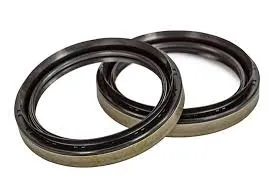11 月 . 04, 2024 10:28 Back to list
Understanding Valve Cover Gaskets and Well Seals for Optimal Engine Performance
Understanding Valve Cover Gasket and Well Seals Importance, Functions, and Maintenance Tips
The engine of a vehicle is a complex and finely tuned piece of machinery that relies on numerous components working in harmony. Among these components, the valve cover gasket and well seals play a crucial role in maintaining the efficiency and longevity of the engine. In this article, we will delve into what valve cover gaskets and well seals are, their functions, signs of wear, and tips for proper maintenance.
What is the Valve Cover Gasket?
The valve cover gasket is a rubber or silicone seal that sits between the valve cover and the engine head. Its main purpose is to prevent oil from leaking out of the engine while also keeping contaminants out. The gasket ensures a tight seal, protecting the internal components of the engine from dirt and debris. When the engine runs, it generates a significant amount of heat, leading to the expansion and contraction of metal components. The valve cover gasket must withstand these temperature fluctuations without losing its sealing ability.
Function of Valve Cover Gasket
1. Preventing Oil Leaks One of the primary functions of the valve cover gasket is to prevent oil from leaking out of the engine. Any oil leakage can lead to a significant drop in oil levels, which can be detrimental to engine performance and may lead to severe engine damage.
2. Contaminant Protection The gasket acts as a barrier against external contaminants, such as dirt, dust, and moisture. This protection is essential for maintaining the integrity of the engine's internal components.
3. Pressure Maintenance The valve cover gasket aids in maintaining the necessary pressure within the engine, which is vital for optimal engine performance.
What are Well Seals?
Well seals, also known as spark plug tube seals, are small rubber seals that fit around the openings in the valve cover where the spark plugs are located. They function similarly to the valve cover gasket but are specifically designed to prevent oil from leaking into the spark plug wells. This leakage can lead to serious engine issues, including poor performance and misfiring.
Signs of Wear and When to Replace
valve cover gasket and well seals

Over time, both valve cover gaskets and well seals can wear out due to exposure to heat, oil, and other factors. Some common signs that these components may need replacing include
- Oil Leaks Visible oil pooling around the valve cover or within the spark plug wells is a primary indicator of failing gaskets or seals. - Engine Misfires If you notice your engine misfiring, it could be due to oil seeping into the spark plug wells, disrupting the ignition process.
- Burning Oil Smell If you detect a burning oil odor while driving, it could mean that oil is leaking onto hot engine parts, which might also be a sign of a defective gasket.
- Engine Warning Lights The check engine light may illuminate for various reasons, including oil leaks, which should be investigated promptly.
Maintenance Tips
To ensure the longevity of your valve cover gasket and well seals, regular maintenance is crucial
1. Regular Inspections Regularly check for signs of oil leaks or corrosion around the valve cover and spark plug wells, especially during oil changes or routine inspections.
2. Proper Torque When installing or re-installing the valve cover, ensure you follow the manufacturer's recommended torque specifications. Over-tightening can damage the gasket, leading to leaks.
3. Use Quality Parts When replacing gaskets or seals, always opt for high-quality materials. Cheap replacements may save money initially but can lead to premature failure.
4. Keep the Engine Clean Maintaining a clean engine can help you spot leaks early. Regularly clean the engine bay and pay attention to the areas around the valve cover and spark plugs.
In conclusion, the valve cover gasket and well seals are vital components of an engine that play critical roles in preventing oil leaks and protecting the engine’s health. Understanding their functions, recognizing signs of wear, and adhering to maintenance tips can significantly enhance the longevity and performance of your vehicle's engine. By staying proactive with your vehicle’s maintenance, you can ensure a smooth driving experience and avoid costly repairs down the road.